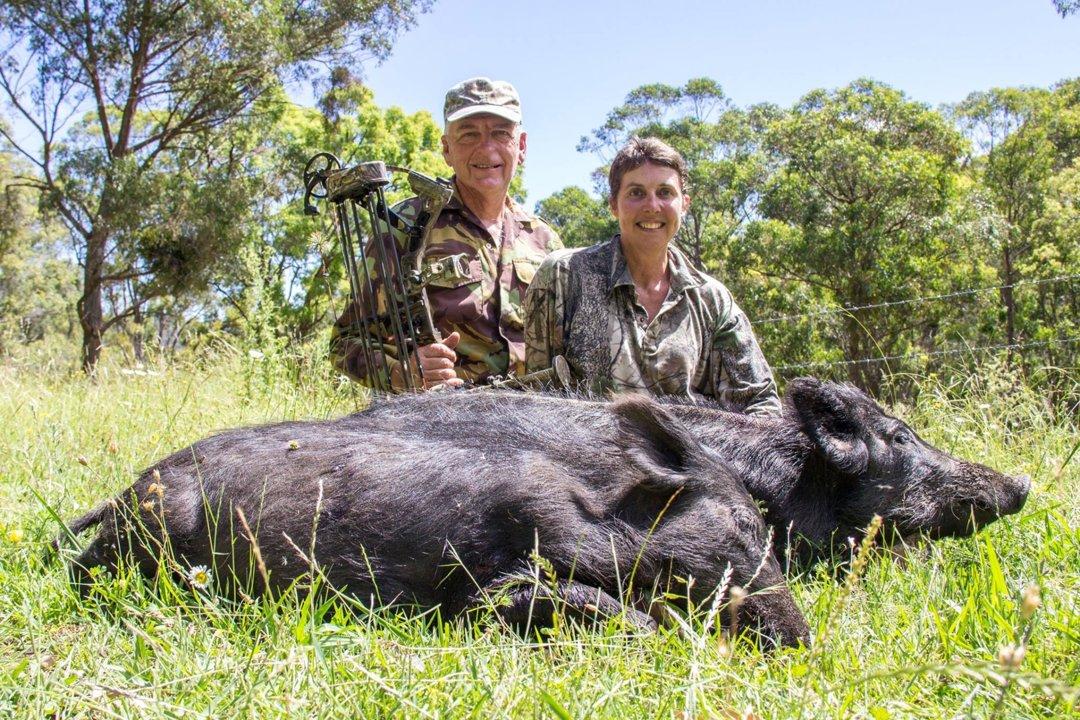huntingclubs - News
Hunting in Private Estates, Special Territories: hunters and demographics of the region, types of hunting and hunting animals, hunting legislation
Geographical and natural features of the region
S
Tourist. Hunter. Fisher 2025
Date: April 17-20, 2025
Venue: Expo Center, Volgograd, Russia
The Tourist. Hunter. Fisher 2025 exhibition is a premier event for outdoor enthusiasts and industry professi
Hunting in National Parks, Special Territories: geography, types of hunting and hunting animals, hunting seasons and legislation in the region
Geographical and natural features of the regions
Lake
Fallow Deer Hunting in Tasmania: Best Locations and Seasonal Tips, Demographics, Legislation System, Laws and Hunting Seasons
Tasmania, an island state of Australia, is a paradise for hunters seeking
Tasmanian Highlands Hunting: Chasing Trophy Game in Untamed Wilderness. Legislation System, Associations and Clubs, Laws and Seasons
The Tasmanian Highlands, located in the heart of Australia’s islan
Eyre Peninsula Hunting: Legislation in Coastal Regions, Demographics, Associations and Clubs, Laws and Hunting Seasons
The Eyre Peninsula, located in South Australia, is a prime destination for hunte
Flinders Ranges Hunting: Hunting Associations and Clubs and Unique Features of Hunting in that region, Demographics, Legislation System, Laws and Hunting Seasons
The Flinders Ranges, located in Sout
Wheatbelt Hunting WA: Types of Game and Their Natural Habitats, Demographics, Legislation System, Associations and Clubs, Laws and Hunting Seasons
The Wheatbelt region of Western Australia is a uniqu
Hunting in Islands, Scotland: exploring nature of the region, features of hunting, associations and clubs of hunters, traditions and interesting facts
Geographical and natural features of the region
Mallee Region Hunting: Uncovering Interesting Facts About Local Game, Demographics, Legislation System, Associations and Clubs, Laws and Hunting Seasons
Nestled in the semi-arid heartland of southeas
Mallee Region Hunting: Uncovering Interesting Facts About Local Game, Demographics, Legislation System, Associations and Clubs, Laws and Hunting Seasons
Nestled in the semi-arid heartland of southeas
Hunting in Shropshire, England: geographical and natural features of the region, hunting seasons, interesting facts and traditions
Geographical and natural features of Shropshire
Shropshire is locat
Riverina Hunting Areas: Types of Game Species and Hunting Seasons, Demographics, Associations and Clubs, Laws
The Riverina region in New South Wales, Australia, is a prime hunting destination known
Snowy Mountains Hunting: Unique Aspects of Chasing Game in Alpine Regions, Demographics, Associations and Clubs, Laws and Hunting Seasons
The Snowy Mountains, part of the Great Dividing Range in sou
NSW Hunting Zones: Exploring Geographical and Natural Features for Hunters, Demographics, Associations and Clubs, Laws and Hunting Seasons
New South Wales, Australia, is a prime destination for hunt
Hunting in Gloucestershire, England: geography, types of hunting and hunting animals, hunting seasons and legislation in the region
Geographical and natural features of the region
Gloucestershire is
Hunting in Hampshire, England: hunters and demographics of the region, types of hunting and hunting animals, hunting legislation
Geographical and natural features of Hampshire
Hampshire is famous
Hunting in Cornwall, England: exploring nature of the region, features of hunting, associations and clubs of hunters, traditions and interesting facts
Geographical and natural features of the region
Hunting in Cumbria, England: geography, types of hunting and hunting animals, hunting seasons and legislation in the region
Geographical and natural features of the region
Cumbria is famous for its
Hunting in Derbyshire, England: geography, types of hunting and hunting animals, hunting seasons and legislation in the region
Geographical and natural features of Derbyshire
Derbyshire is located
Hunting in Herefordshire, England: hunters and demographics of the region, types of hunting and hunting animals, hunting legislation
Geographical and natural features of the region
Herefordshire is
Hunting in Suffolk, England: geographical and natural features of the region, hunting seasons, interesting facts and traditions
Geographical and natural features of the region
Suffolk is a predomi
Hunting in Norfolk, England: geography, types of hunting and hunting animals, hunting seasons and legislation in the region
Geographical and natural features of Norfolk for hunting
Norfolk is locate
Hunting in Devon, England: geographical and natural features of the region, hunting seasons, interesting facts and traditions
Geographical and natural features of the region
Devon is a region with a
Hunting in Northumberland, England: hunters and demographics of the region, types of hunting and hunting animals, hunting legislation
Geographical and natural features of the region
Northumberland i
Victorian Alpine Hunting: Traditions and Challenges in High-Country Terrain, Demographics, Legislation System, Associations and Clubs, Laws and Hunting Seasons
Nestled in the southeastern corner of A
Victorian Alpine Hunting: Traditions and Challenges in High-Country Terrain, Demographics, Legislation System, Associations and Clubs, Laws and Hunting Seasons
Nestled in the southeastern corner of A
T.L. Chasse Hunting Club in Morocco (TLChasse)
As an avid hunter, my recent experience with T.L. Chasse in Morocco was absolutely unforgettable. Nestled in the scenic beauty of Rabat, specifically at
Alexander's Nighttime Trophies: Successful Ungulate Hunting with the Pulsar Rika NV HRS LRF 640
Alexander, a member of our hunting club, shared the results of his nighttime ungulate hunt. Using the P
Hunting in Catlins Forest: find curious hunting facts, seasons, laws, clubs and associations in the heart of New Zealand
Geographical and natural features of Catlins Forest: ideal conditions for hunt
Stjørdal Hunting Clubs: A Hub for Norwegian Hunting Culture. Hunting Legislation, Hunting Traditions and Interesting Facts About Hunting
Geographical and Natural Features: Hunting in Stjørdal Region
Mississippi Deer Management: Demographics, Associations and Clubs, Laws and Hunting Seasons. Balancing Herds and Hunting Opportunities
Mississippi, known as the "Magnolia State," is a prime destinati
Nelson Hunting Permits: unique opportunities and traditions, hunting clubs and associations, types of hunting and game
Geography and nature of the Nelson Hunting Permits region
The Nelson region is l
Hunting in Luleå, Sweden: A guide to permits, game species, hunting seasons, and local traditions for a rich hunting experience in the northernmost part of Sweden
Luleå, located in northern Sweden, i
Related to request “huntingclubs”


































